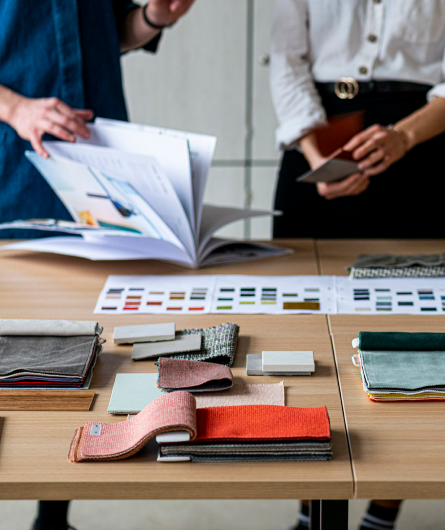
A Natural Approach to Space
Biophilic design is a way of designing spaces that help us to reconnect with nature. A great working environment should borrow from the natural environment.
“Biophilia” is one of the most popular buzzwords in modern workplace design. But what exactly does it mean? In short, “biophilia” is the “love of life or living systems”. Following from this, “biophilic design” is a way of designing spaces that help to reconnect us with nature, as favoured by many of the world’s most innovative companies. Not only do the likes of Google, Facebook and AirBnB fill their offices with spaces for collaboration and relaxation, they also plan these spaces according to biophilic design principles: AirBnB’s headquarters in San Francisco, for example, features a “living wall” of climbing plants that rises three floors through its atrium.
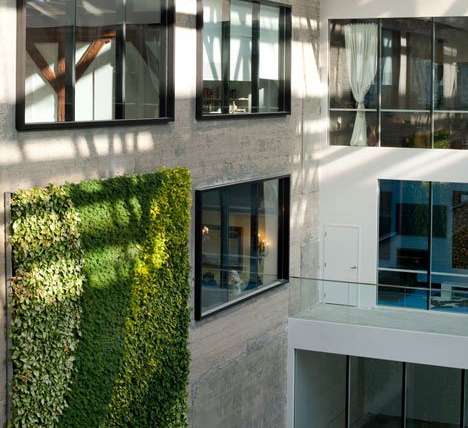
The living wall at AirBnB's headquarters in San Francisco
To begin, let’s have a look at where this rather modern term came from. It was first used by German psychoanalyst Erich Fromm (1900–1980) to describe our attraction to the vibrant and full-of-life: in “The Anatomy of Human Destructiveness” (1973), Fromm describes biophilia as “the passionate love of life and of all that is alive”. Eleven years after the publication of Fromm’s book, American biologist Edward Wilson (1925–present) – a man who won the Pulitzer Prize not once, but twice, and is also renowned as the world’s leading authority on ants – published a collection of essays titled “Biophilia” (1984) in which he developed his own biophilia hypothesis: that, as humans, we have an innate, primal desire to connect with the natural world from which we came.

Erich Fromm (L) and Edward Wilson (R)
More recently, in the 21st century, there has been a renewed interest in biophilia, and particularly in the many benefits of incorporating natural elements into the cities and spaces where we spend so much of our time. As various surveys have shown, biophilic design can transform not only the appearance of a workplace, but also the lives of all those that work in it.
• 58% of offices worldwide have no plants. • But bringing plants into an office lowers feelings of tension and anxiety by 37%, and has also been found to reduce fatigue. • 47% of offices have no natural light. • But windows, and natural light, are very important for wellbeing. And furthermore, employees whose desk faces a window tend to perform 7% faster than their colleagues who face the other way. • One survey found that those working in offices designed with natural elements had a 15% greater feeling of wellbeing, and were 15% more creative and 6% more productive. • Another found that employees’ cognitive abilities were boosted by 26%, sick days fell by 30% and, most remarkably, quality of sleep rose by 6% – in other words, they were still feeling the benefits long after returning home.
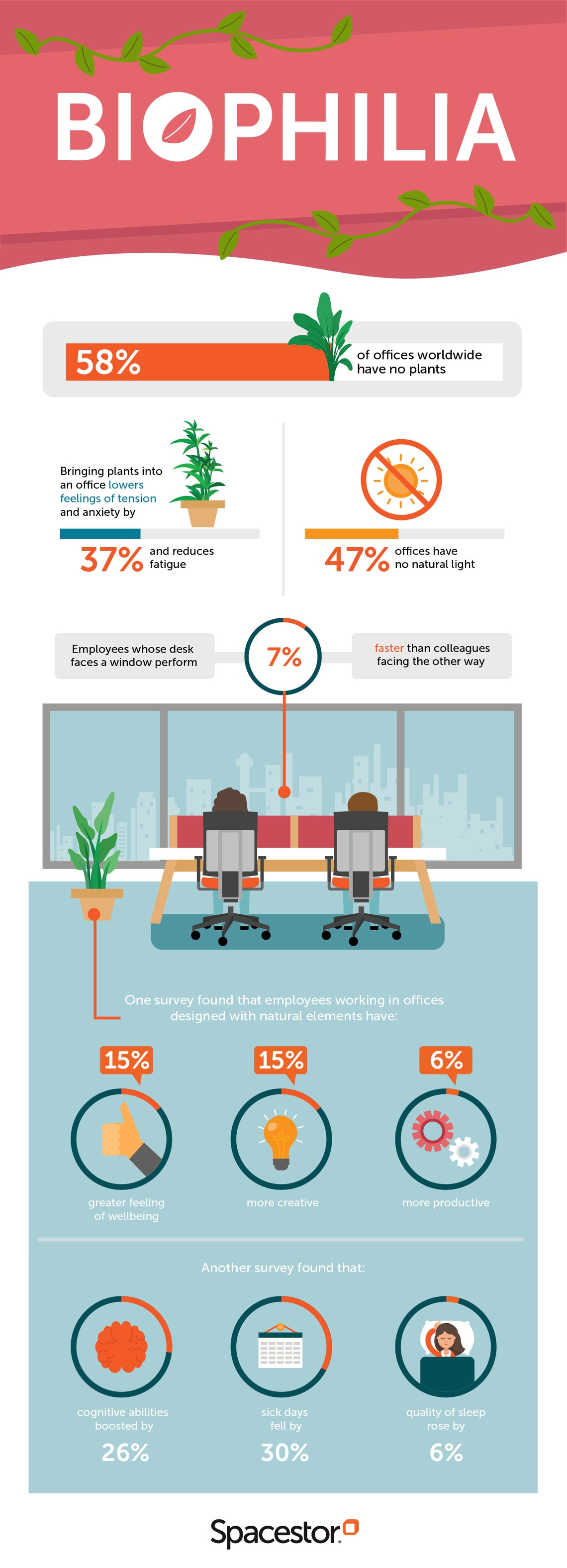
So here are three great ways to bring biophilic design into your office. FIRSTLY, plants. Plants are nice to look at, they’re great sound absorbers, they produce fresh air, they smell good, and they can even grow fruit and vegetables for staff to enjoy. In a recent project in London, for instance, our Palisades Grid system was used not only as a storage and display space, but also as a place to grow flowers and succulents. And that’s not all – in other offices, we have even incorporated tropical fish tanks into the Palisades system!

Palisades - a recent project
SECONDLY, windows. A view of some trees through the window is excellent for one’s wellbeing. Even a view of the sky can be a great help – not least because it really helps with creativity and “blue sky thinking”. In order to make the most of the windows in a space, keep everything as open-plan as possible and use modular furniture like our Storagewall and HotLocker systems that can fit snugly around a window without blocking any of the sunlight.

A window view for some blue sky thinking...

A recent project - building round windows...
THIRDLY, materials and finishes. Natural materials have a calming effect, which is one of the reasons why we like to use them in our products. Similarly, all hard and soft furnishings can be finished in patterns and colours that remind us of the great outdoors. We always like to customise our products for our customers, knowing how relaxing and creatively inspiring the results can be.

Natural materials - the oak leg of the Zee table
As we’ve seen, biophilic design comes in many forms – but the most important thing to remember is that a great working environment should borrow from the natural environment. As we’ve also seen, those working in such spaces are happier, and healthier, and do better at their jobs, all of which makes for a more successful business – so biophilia won’t just put smiles on faces, it will also help push your profits further into the green. Read more of our design insights here . Follow us on Facebook , Twitter and LinkedIn to keep in touch.

Another verdant space ...



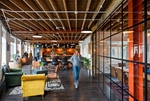


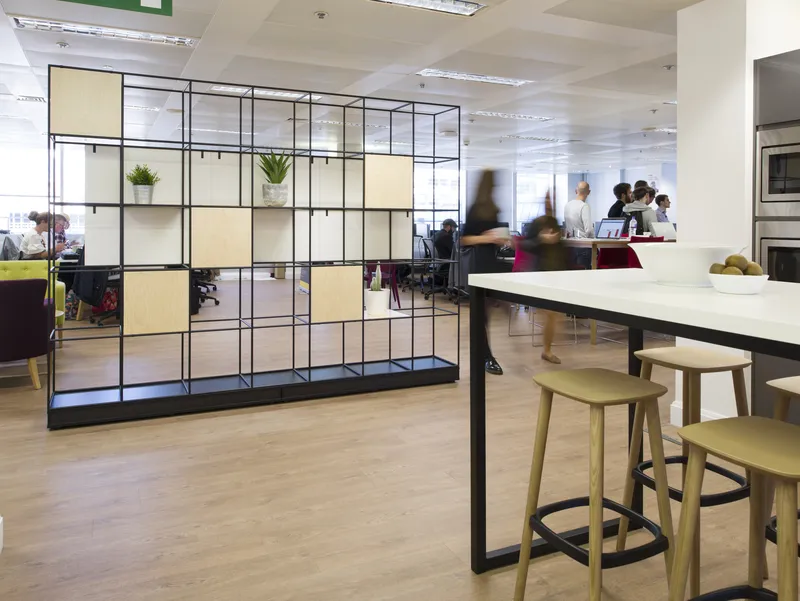
Our Palisades Grid space divider became the centerpiece of this workspace, used as a modernist architectural feature as…
MANUFACTURING
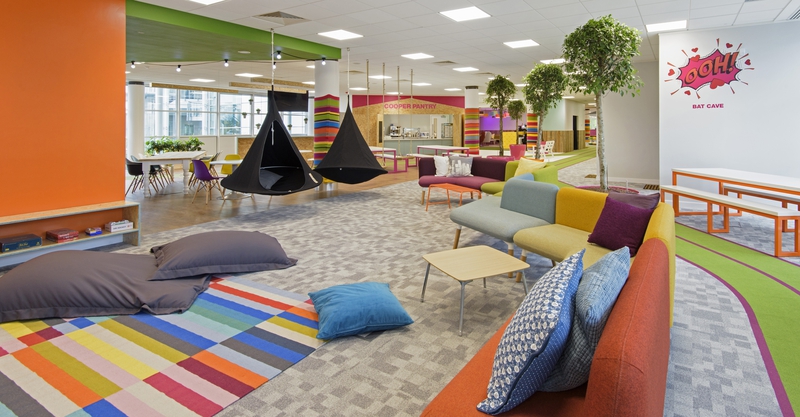
Accountancy disruptor PKF Cooper Parry are changing the face of their industry. These aren't the average worker's offic…
FINANCIAL SERVICES
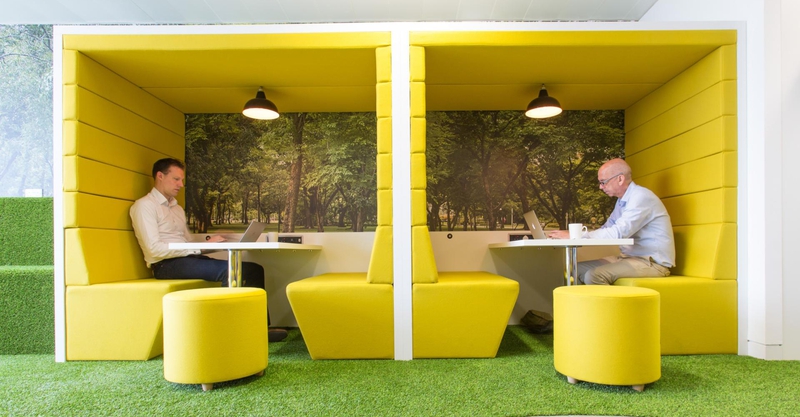
A market-leading financial technology business that believes in great workspace culture being the key to success create…
FINANCIAL SERVICES
